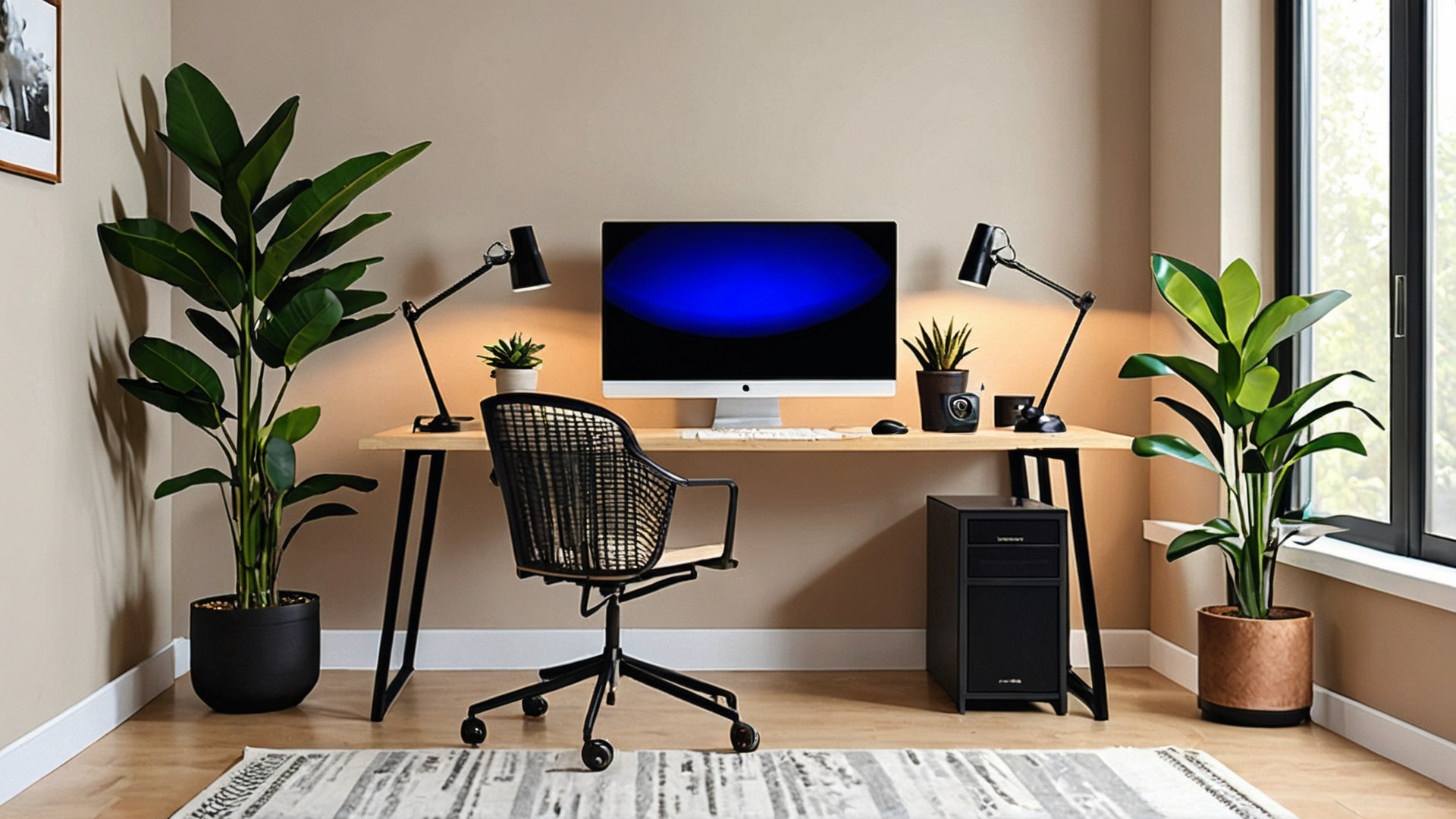Stability Matrix offers a simple one-click installation process for Stable Diffusion web UI packages. This remarkable tool changes how newcomers can access AI image generation technology.
Many users find Stable Diffusion environments challenging to set up. Stability Matrix’s install procedures make this complex process much easier. The platform works as a user-friendly interface that improves performance and usability for automatic 1.1.1 stable diffusion. Your system requirements will vary based on your chosen model. To cite an instance, SD 1.5 needs at least 4GB VRAM and 16GB RAM, while SDXL 1.0 Turbo demands a minimum of 8GB VRAM and 32GB RAM. The platform’s safety measures include recommended directory backups to prevent data loss.
This piece walks you through Stability Matrix’s effective use, from the original setup to your first AI image generation. Clear instructions help both AMD graphics card users who need DirectML support and those with standard NVIDIA hardware complete a successful installation.
What is Stability Matrix and Why Use It
Stability Matrix works as a detailed package manager and interface built for Stable Diffusion AI models1. This free and open-source desktop application acts as a control center to help you manage multiple AI image generation interfaces in one program.
Overview of Stability Matrix features
Stability Matrix shines through its versatile features:
- Multi-platform support for Windows, Linux, and macOS2
- Central model management that shares checkpoints across different interfaces3
- Built-in model browser to import from CivitAI and HuggingFace1
- Multiple interface support including Automatic1111, ComfyUI, Fooocus, and several others1
- Embedded dependencies with Git and Python included, so you won’t need separate installations4
The software offers handy features like pause and resume downloads, automatic metadata retrieval, and support for 13 different languages thanks to community contributors1. Users worldwide can access it easily whatever their technical expertise.
How it simplifies Stable Diffusion installation
Traditional Stable Diffusion setup needs many technical components. Stability Matrix makes this process simple. The application unpacks embedded Git and Python 3.10 automatically once launched4. You won’t have to deal with compatibility issues or dependency management.
One click handles everything. The software downloads appropriate PyTorch/xformers packages based on your GPU specs and sets optimal settings4. Stability Matrix removes technical barriers that often stop beginners from trying AI image generation.
The software’s portable nature lets you move your entire setup between computers or drives without complex reconfiguration1.
Is Stability Matrix safe to use?
Stability Matrix comes from a trusted developer (Lykos AI) with open-source code available on GitHub1. The software runs without administrator privileges and keeps a self-contained environment that won’t mess with your system installations4.
The developers make it clear they have no connection to cryptocurrencies and warn users about possible scams1. Their transparency and active community support make Stability Matrix a trusted solution for Stable Diffusion enthusiasts.
System Requirements and Preparation
Let me guide you through what your computer just needs to run Stability Matrix smoothly. You’ll want to check these system requirements first to get the best performance.
Minimum hardware and software requirements
The simple contours of Stability Matrix match what Stable Diffusion itself needs. Your computer should run Windows 10/11, Linux, or macOS5. Here’s what your hardware should have:
- RAM: At least 8GB of system memory, though 12GB works better65
- GPU: NVIDIA or AMD graphics card with 4GB+ VRAM (AMD support is experimental)56
- Storage: Minimum 20GB free space on your SSD5
- Special note: Apple Silicon is also supported5
Note that these are just the baseline specs. You’ll just need more resources to run larger models, especially VRAM and RAM.
Recommended system settings for smooth performance
To get the most out of Stability Matrix, here are the upgraded specs I suggest:
- RAM: 16GB+ system memory6
- GPU: Modern graphics card with 8-12GB VRAM6
- Python version: 3.10.1 is specifically recommended7
Each model comes with its own requirements. Your system might work better with lighter models like SD 1.5 or SD 2.1 if you have limited resources. High-end models might cause performance issues on basic systems78.
On top of that, your NVIDIA GPU can run the tool on CUDA to get the best performance7.
Optional: Increase pagefile or swap memory
You can improve stability by tweaking your virtual memory settings. This helps a lot when physical RAM is limited.
Windows users can avoid out-of-memory errors by increasing their pagefile:
- Open Settings and search for “performance”
- Select “Adjust the appearance and performance of Windows”
- Click the Advanced tab
- Under Virtual memory, click “Change”9
Set your pagefile size to 1.5 times your physical memory at minimum10. This extra virtual memory helps prevent crashes during memory-heavy tasks.
Linux users should boost their swap space too for smoother performance8.
Step-by-Step Installation Guide
Setting up Stability Matrix takes just five simple steps. Here’s a clear guide to help you get started.
Step 1: Download Stability Matrix
Head over to the official Stability Matrix page on GitHub or Lykos.ai to grab the latest version. Pick the right installer for your system – Windows, Linux, or Mac. The download comes as a zip file with the installer executable. Extract this file somewhere convenient on your computer.
Step 2: Run the installer and choose install location
Launch the executable after extraction. The installer asks where you want to put the software. Python dependencies make it tricky to move things later, so choose your spot carefully. An SSD with enough space works best. Users with limited SSD space can create a directory on a bigger hard drive. Stability Matrix’s portable mode keeps everything in a ‘Data’ folder right next to the application.
Step 3: Select interface (WebUI, Fooocus, ComfyUI)
The setup screen shows several interface options:
- Automatic1111 WebUI: The default and frequently updated option
- Fooocus: Like in WebUI with DirectML support for Windows AMD users
- ComfyUI: Advanced option that gives you the most generation control
- VoltaML: Fast generation interface
- InvokeAI: Best for specialized inpainting and editing tools
Pick your preferred interface with a click. Stability Matrix takes care of all dependencies automatically.
Step 4: Download and install base models
Your Stability Matrix installation needs models to work. Models live in the data directory under Models/StableDiffusion/. The built-in model browser lets you download models directly, or you can import them manually into this directory. New users should try DreamShaper SD 1.5 (4GB VRAM minimum) or Illuminati SD 2.1 for midrange systems.
Step 5: Launch and verify installation
Hit the green launch button to start your chosen interface. The first run downloads any missing dependencies. Your web browser should open the interface automatically. Try a simple prompt like “cat riding a skateboard” to make sure everything works properly.
Post-Installation Setup and Tips
Stability Matrix becomes more powerful when you know how to use its interface after installation. Here’s a guide to help you get the most from this tool after setting it up.
How to use Stability Matrix WebUI
The WebUI offers an accessible interface to generate AI images:
- Paste parameters into the positive prompt field using Ctrl+V
- Click the arrow symbol left of “Generate” to automatically fill required fields
- Review your prompts and settings before clicking “Generate”
- Get into the results by clicking generated images for larger views
- Save and archive images using the buttons underneath
You can create your own collection of prompt words by picking high-quality terms from the menu in the lower right corner of the Generate section.
Adding and managing models
Stability Matrix stands out with its model management capabilities through several methods:
- CivitAI Integration: Search for models in the Model Browser and select “Import Latest” to download directly
- Manual Import: Drag and drop model files into Stability Matrix or place them in the shared Models folder
- External Storage: Store rarely-used models on external drives using symbolic links while keeping important ones on your main drive
Models stay in a shared directory, which prevents duplication across different UI packages.
Creating backups and handling updates
Your data needs backup protection before updates. Start by archiving images and models from your Stability Matrix directory. The system tries to migrate files to shared directories, but you should verify the process.
The update process starts when you click the notification. Note that interrupted downloads might corrupt files. You can turn off update notifications in settings if needed.
Simple troubleshooting tips
Solutions to common problems:
- Window Position Problems: Launch with
--reset-window-positionwhen the app starts offscreen - Package Issues: Back up your outputs folder before reinstalling problematic packages
- Model Recognition: Use “Find Connected Metadata” to connect models with their metadata
- Dependency Conflicts: Fix compatibility problems by editing the requirements_versions file
Stability Matrix’s design keeps interfaces separate yet connected through a shared model repository. This setup reduces disk usage while giving you more flexibility.
Conclusion
Stability Matrix is a game-changer that revolutionizes AI image generation. This powerful tool removes technical barriers that often stop beginners from getting started. The one-click installation handles complex dependencies automatically and saves countless hours of troubleshooting time. It also features a central model management system that optimizes resource sharing between different interfaces.
You can pick between interfaces like Automatic1111, ComfyUI, or Fooocus to control your creative process based on what works best for you. The tool’s multi-platform support for Windows, Linux, and macOS makes it available to users whatever their operating system.
The system requirements are clear and simple – from basic 8GB RAM setups to recommended specs for advanced models. This helps you choose models that match your hardware’s capabilities.
Start creating your own AI art today without any third-party costs. The simple installation steps will get you running quickly. Our post-installation tips will help you make the most of your experience right from the start.
Stability Matrix makes AI art creation possible for everyone. This piece gives you everything you need to begin a journey into AI-generated imagery. The mix of accessible interfaces, broad model support, and optimized installation makes this tool a great way to get started for both beginners and experienced creators.
FAQs
Q1. What is Stability Matrix and why should I use it? Stability Matrix is a free, open-source desktop application that simplifies the installation and management of Stable Diffusion Web UIs. It offers one-click installation, centralized model management, and support for multiple interfaces like Automatic1111, ComfyUI, and others.
Q2. What are the system requirements for running Stability Matrix? The minimum requirements include 8GB RAM, a GPU with 4GB+ VRAM, and 20GB free storage space. For optimal performance, 16GB+ RAM and a modern GPU with 8-12GB VRAM are recommended. Stability Matrix supports Windows, Linux, and macOS.
Q3. How do I install Stability Matrix? Download the installer from the official website, run it, choose your installation location, select your preferred interface (e.g., Automatic1111, ComfyUI), download base models, and launch the application. The process is designed to be straightforward and user-friendly.
Q4. Can I use my existing models with Stability Matrix? Yes, you can import existing models by dragging and dropping them into the application or placing them in the shared Models folder. Stability Matrix also offers a built-in model browser for downloading new models directly from platforms like CivitAI.
Q5. How does Stability Matrix handle updates and backups? Stability Matrix notifies you of available updates but doesn’t implement them without your confirmation. It’s recommended to create backups of your images and models before updating. The application attempts to migrate files to shared directories during updates, but it’s always wise to verify your data afterward.
References
[1] – https://github.com/LykosAI/StabilityMatrix
[2] – https://aibusinesshelp.co.uk/how-to-run-a-local-ai-image-generator-with-stability-matrix-and-stable-diffusion
[3] – https://www.toolify.ai/gpts/become-a-pro-in-ai-image-generation-with-stability-matrix-135189
[4] – https://www.reddit.com/r/StableDiffusion/comments/14iuilo/stability_matrix_oneclick_install_and_update_for/
[5] – https://lykos.ai/
[6] – https://sdxlturbo.ai/blog-Effortless-Stable-Diffusion-Installation-with-Stability-Matrix-1568
[7] – https://www.yeschat.ai/blog-Easy-Stable-Diffusion-with-Stability-Matrix-AI-tool-14606
[8] – https://morrowshore.com/guide/imageai/?srsltid=AfmBOopX9vmqMdicO15LwEv2w6OCCG1fmOqUAAzlss5vizbvmJkutXR3
[9] – https://support.robertsspaceindustries.com/hc/en-us/articles/360000083387-Out-of-memory-errors-set-your-pagefile
[10] – https://medium.com/@jebarpg/16-ways-to-improve-performance-for-stable-diffusion-56a43a582e3e

